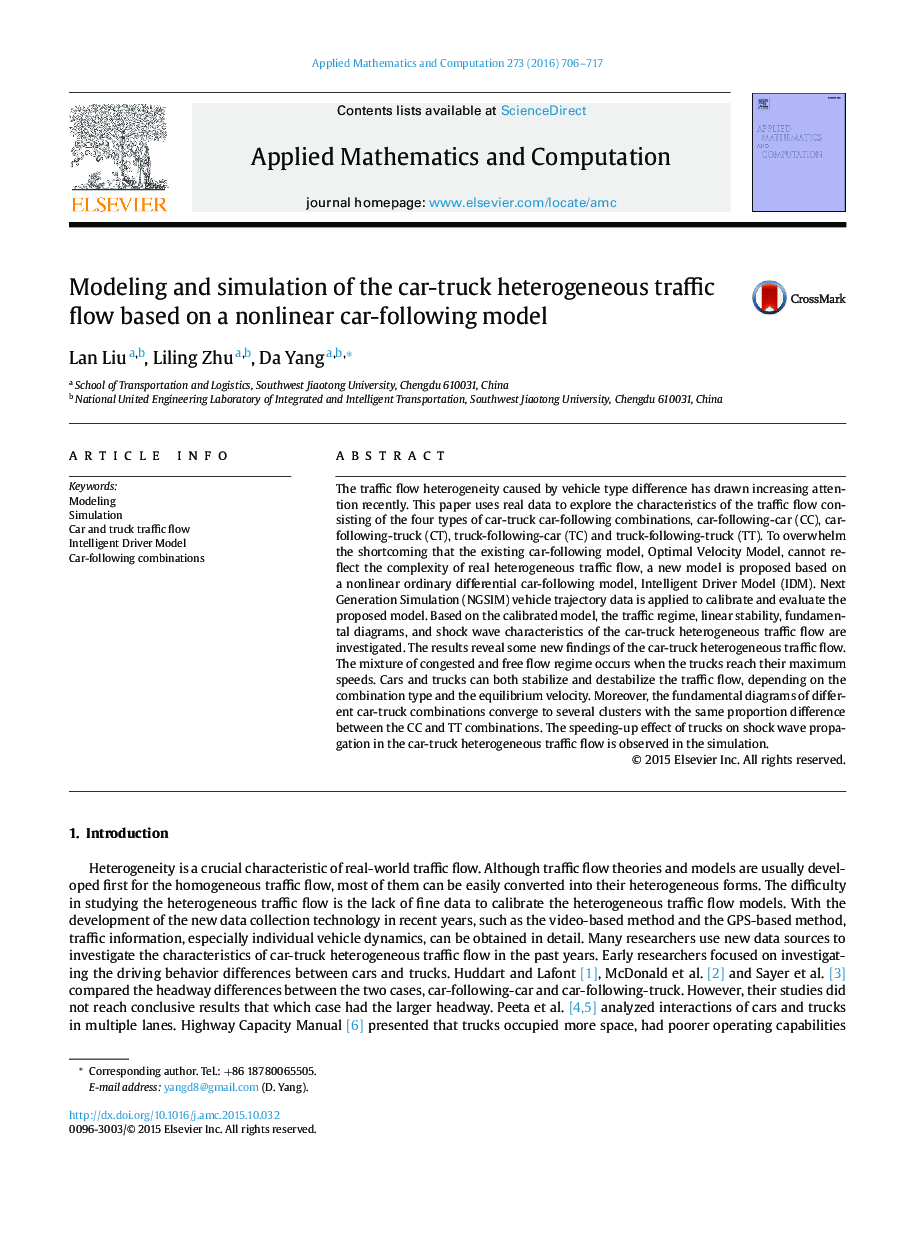| Article ID | Journal | Published Year | Pages | File Type |
|---|---|---|---|---|
| 4626068 | Applied Mathematics and Computation | 2016 | 12 Pages |
The traffic flow heterogeneity caused by vehicle type difference has drawn increasing attention recently. This paper uses real data to explore the characteristics of the traffic flow consisting of the four types of car-truck car-following combinations, car-following-car (CC), car-following-truck (CT), truck-following-car (TC) and truck-following-truck (TT). To overwhelm the shortcoming that the existing car-following model, Optimal Velocity Model, cannot reflect the complexity of real heterogeneous traffic flow, a new model is proposed based on a nonlinear ordinary differential car-following model, Intelligent Driver Model (IDM). Next Generation Simulation (NGSIM) vehicle trajectory data is applied to calibrate and evaluate the proposed model. Based on the calibrated model, the traffic regime, linear stability, fundamental diagrams, and shock wave characteristics of the car-truck heterogeneous traffic flow are investigated. The results reveal some new findings of the car-truck heterogeneous traffic flow. The mixture of congested and free flow regime occurs when the trucks reach their maximum speeds. Cars and trucks can both stabilize and destabilize the traffic flow, depending on the combination type and the equilibrium velocity. Moreover, the fundamental diagrams of different car-truck combinations converge to several clusters with the same proportion difference between the CC and TT combinations. The speeding-up effect of trucks on shock wave propagation in the car-truck heterogeneous traffic flow is observed in the simulation.
